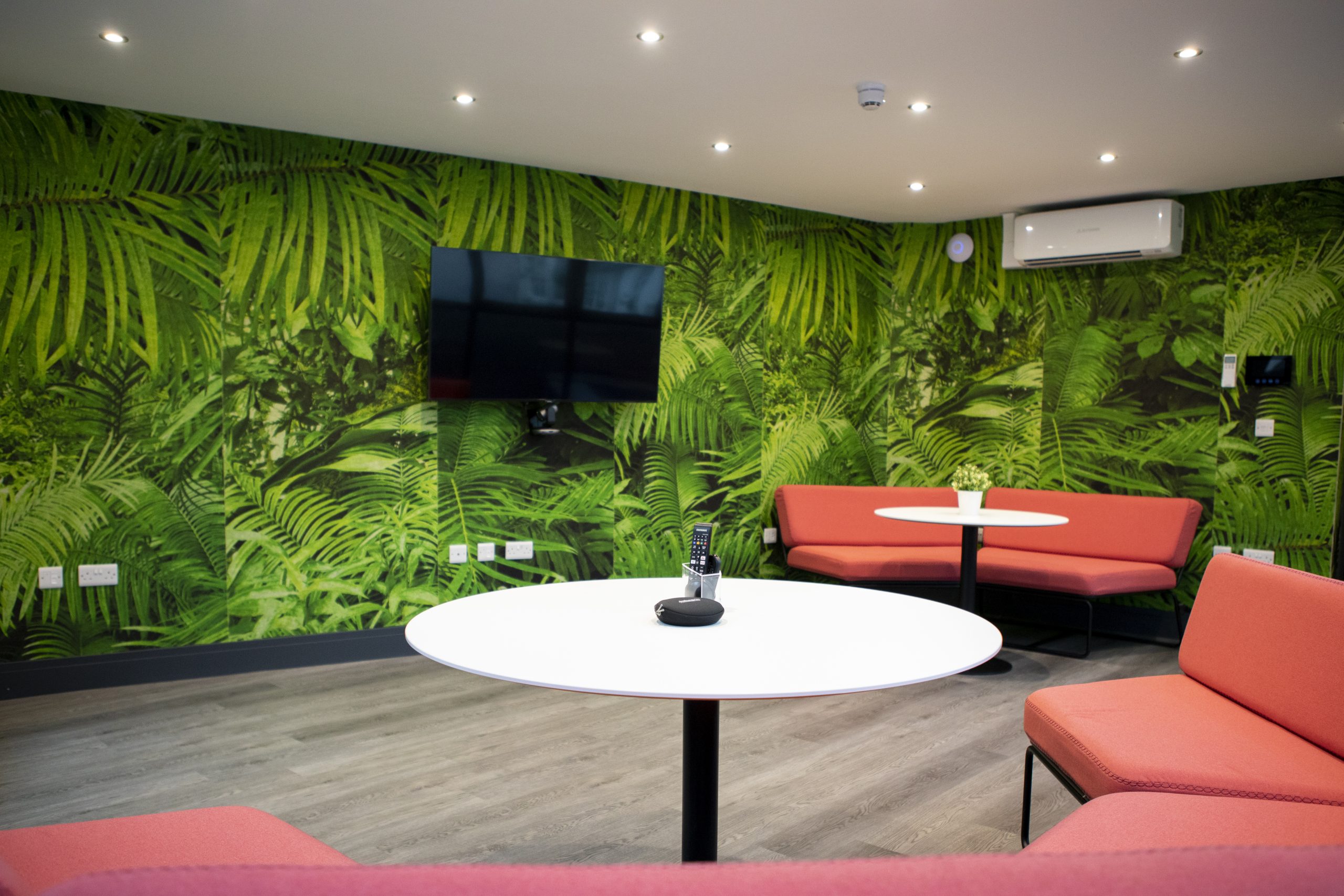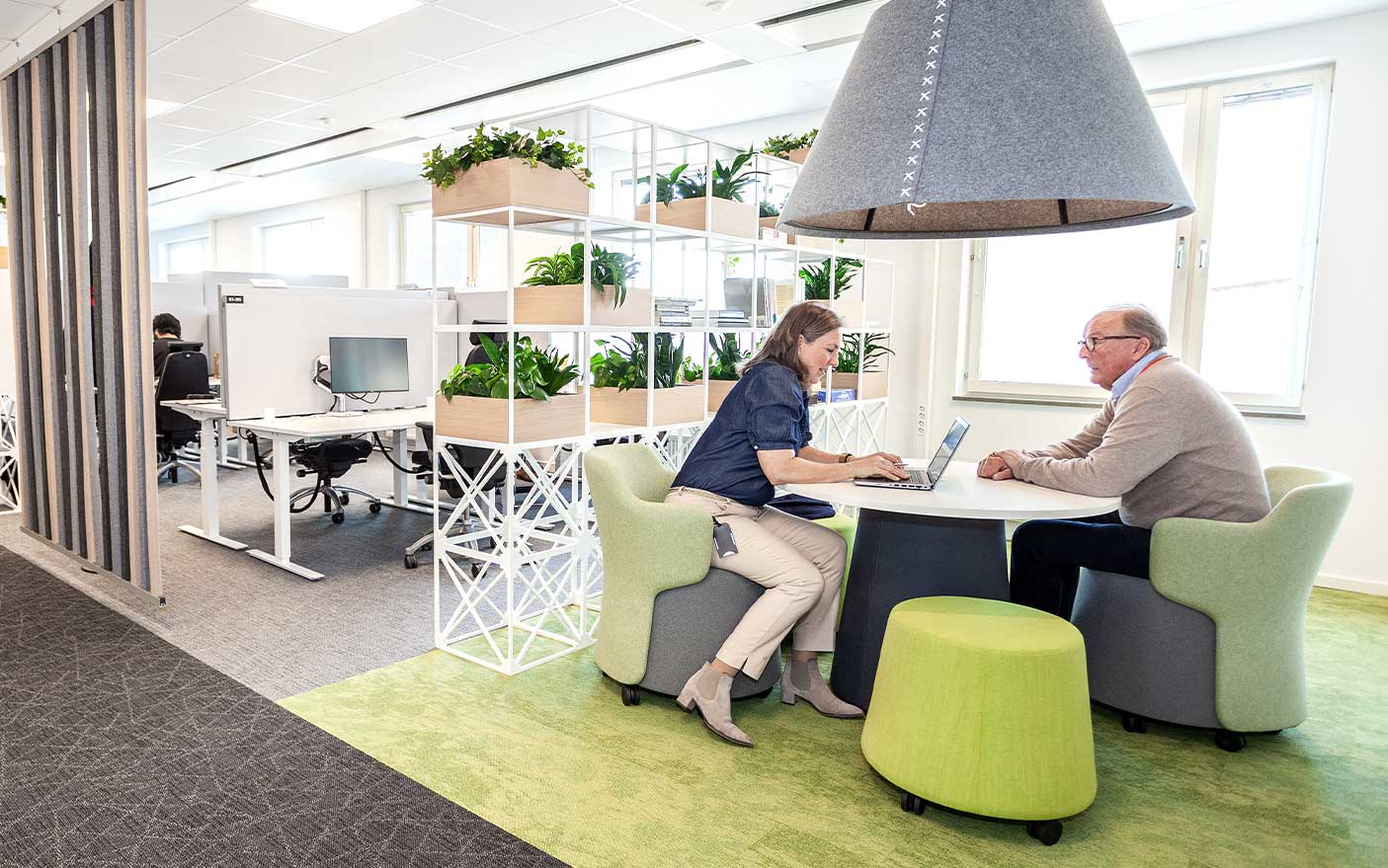Office noise is a collective noise volume from the movement and actions of people, loud conversations, appliance hum, ventilation vibration, and trigger sounds such as telephones, beeping, and tea making.
HUMAN HEARING
Human hearing is measured in decibels. Your brain has to process sounds from zero on the decibel scale, regardless of whether you notice you have reacted to the sound. Excessive levels of ambient stressors can contribute to stress and illness. In turn, this affects absenteeism and turnover in staff.
When planning an office space refurbishment, workplace managers may seek to reduce sound transmission for privacy reasons. Although unfortunately, the impact of noise disturbance on employees is often not the main priority.

Busy office environment with many staff working at desks
NEGATIVES OF A NOISY WORKSPACE
Numerous studies exist on the impact of noise disturbance in the office environment. Whilst their findings vary, they all agree that noise distraction leads to a loss of productivity because it breaks concentration. These distractions hamper the efforts of office workers, particularly impacting those needing to focus on detailed tasks. When your attention is interrupted, you not only have disturbance by the event, but it also takes you longer to re-engage with an activity.
Studies have found that workers who routinely work in a loud-noise environment are more tired and less motivated. They also remember less of their training/study than those working in a low-noise environment. Prolonged exposure to workplace noises can trigger physiological stress responses in our bodies. For example, spikes in blood pressure and heart rate and sleep disturbance. Consequently contributing to anxiety and depression and could even trigger PTSD.

Employee working at his desk in a busy office environment
PLANNING NOISE REDUCTION INTO YOUR SCHEME
Suppose you are seeking an office refurbishment. In that case, your fit-out can be tailored with your contractor to include acoustic glazing, insulation and plasterboard. Good planning will ensure electrical, and ventilation conduits transmit only those services, not sound reverberation.

Newly fitted out breakout space, by Mobius At Work
Take advice on space planning and creating desk-based concentration zones separated from social or collaborative areas. Ensure there are an appropriate number of meeting places so that meetings don’t stray into other work areas. Please work with your designers on a sound mitigation strategy, perhaps introducing partitioning and acoustic baffling measures or installations; they’re much easier to implement and infinitely more stylish than they sound. Also, consider investing in telephone pods and booths; these specialist acoustic products provide completely private spaces in an open-plan environment, ideal conditions for important calls and video conferencing, sparing colleagues from having to listen to half a conversation. Your designer can also demonstrate how simple choices such as flooring substance, upholstery fabrics and finishing elements like loose fabrics and plants can all work together to reduce noise levels by absorbing and diffusing sound waves.
A considered office workspace commissioned with attention to reducing potential noise distractions is an altogether more productive environment, enabling task focus, enjoyable and collaborative working, and still protecting that essential privacy for sensitive conversations and meetings. If you need help reducing the noise in your workplace, contact us for a free design consultation and we will help you to find a solution.

